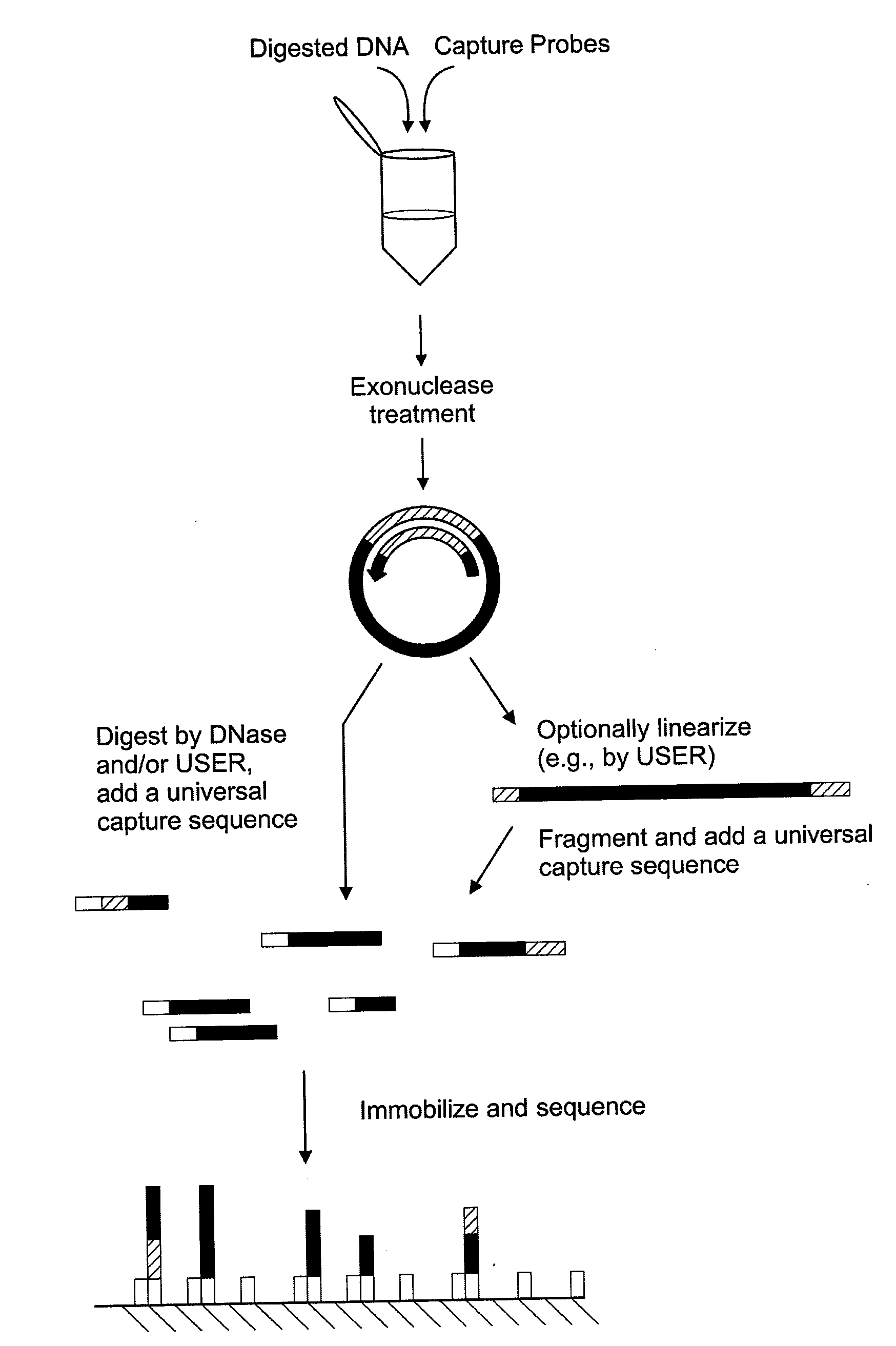Surface-capture of target nucleic acids
a target nucleic acid and surface capture technology, applied in the field of molecular biology, can solve the problems of loss of the target nucleic acid molecule, prone to multiple replication errors, and inability to detect background noise,
- Summary
- Abstract
- Description
- Claims
- Application Information
AI Technical Summary
Benefits of technology
Problems solved by technology
Method used
Image
Examples
example
[0077]Genomic DNA is extracted from cultured cells by using the DNeasy Blood & Tissue Kit (Qiagen) or the Gentra genomic DNA preparation kit (Minneapolis, Minn.) following the manufacturers' protocols.
[0078]10 units of a restriction enzyme are used to digest the genomic DNA in manufacturer's recommended buffer and temperature for 1 hour to a final concentration of 100 ng / μl. To denature the digested DNA before the circularization reaction, the samples are heated to 95° C. for 15 min by using a thermal cycler. 250 ng of DNA is added to a capture probe in a total concentration of 10 nM, 100 nM of the uracil-containing probe, 1× Ampligase buffer (Epicentre, Madison, Wis.), 1 mM NAD, 5 units of Taq DNA polymerase (Invitrogen, Carlsbad, Calif.), 2 mM MgCl2, and 5 units of Ampligase (Epicentre) to a final volume of 20 μl. The mixture is incubated at 95° C. for 10 min, followed by 75° C. for 15 min, 65° C. for 15 min, 55° C. for 15 min, and 45° C. for 15 min.
[0079]The circularized target i...
PUM
| Property | Measurement | Unit |
|---|---|---|
| temperature | aaaaa | aaaaa |
| melting temperature | aaaaa | aaaaa |
| temperature | aaaaa | aaaaa |
Abstract
Description
Claims
Application Information
 Login to View More
Login to View More - R&D
- Intellectual Property
- Life Sciences
- Materials
- Tech Scout
- Unparalleled Data Quality
- Higher Quality Content
- 60% Fewer Hallucinations
Browse by: Latest US Patents, China's latest patents, Technical Efficacy Thesaurus, Application Domain, Technology Topic, Popular Technical Reports.
© 2025 PatSnap. All rights reserved.Legal|Privacy policy|Modern Slavery Act Transparency Statement|Sitemap|About US| Contact US: help@patsnap.com



